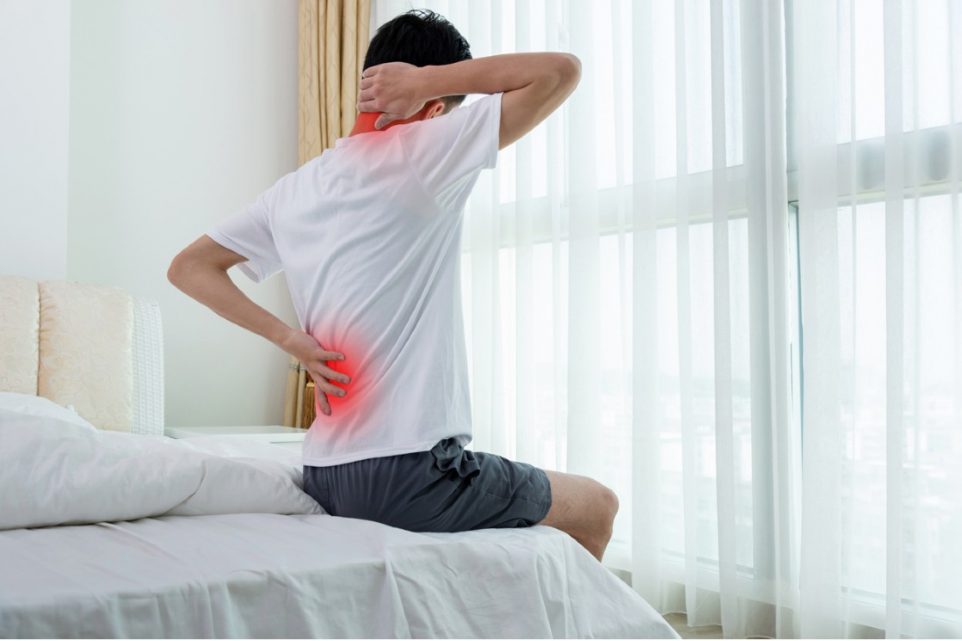How Can Stiff and Tight Muscles Result in Back Pain?

Back pain is a pervasive issue, affecting individuals across all demographics. While there are various triggers for back pain, one frequently underestimated contributor is the presence of stiff and tight muscles. Muscles play a pivotal role in supporting the spine and ensuring proper posture. When these muscles become tense and lose their flexibility, they can instigate discomfort and pain.
In this comprehensive blog, we’ll delve into the intricate connection between stiff and tight muscles and their potential to lead to back pain. Understanding muscles’ role in back health is essential for effectively addressing this issue. Through this exploration, we aim to shed light on how muscle tightness can result in back pain and offer insights into preventive measures and methods for alleviating this prevalent and often debilitating problem.
The Role of Muscles in Back Health
To understand how stiff and tight muscles can lead to back pain, it’s essential to grasp the role muscles play in supporting the spine. The spine is the central structure of the human body, and it relies on muscles for stability, flexibility, and proper alignment.
- Spinal support: The muscles surrounding the spine, including the erector spinae, help maintain an upright posture and provide stability to the spinal column. When these muscles are strong and flexible, they can better support the spine, reducing the risk of pain or injury.
- Joint movement: Muscles allow for a wide range of motion in the spine, including bending, twisting, and rotating. When muscles are tight and inflexible, these movements become restricted, leading to discomfort.
- Shock absorption: Muscles act as shock absorbers, reducing the impact on the spine during activities like walking, running, or jumping. Tight muscles can diminish their ability to absorb shock, increasing the strain on the spine.
The Connection Between Muscle Tightness and Back Pain
Now that we understand the importance of muscles in back health let’s delve into how muscle tightness can result in back pain:
- Increased pressure on the spine: When muscles around the spine are tight, they exert increased pressure on the spinal column. This added pressure can compress the vertebrae, leading to pain and discomfort.
- Altered posture: Stiff and tight muscles can pull the spine out of its natural alignment, causing poor posture. Over time, this can lead to chronic back pain as the spine is regularly subjected to abnormal stresses.
- Limited range of motion: Tight muscles restrict the range of motion in the spine. This limitation can make everyday activities like bending, lifting, or even sitting for extended periods painful and challenging.
- Muscle imbalances: Muscle tightness can lead to imbalances in the musculoskeletal system. When some muscles are overly tight while others are weak, it can result in uneven forces on the spine, contributing to pain and dysfunction.
Common Causes of Muscle Tightness
Several factors can contribute to muscle tightness, increasing the risk of back pain:
- Sedentary lifestyle: Sitting for extended periods, such as working at a desk job, can cause muscles to become stiff and tight, especially in the lower back and hip flexors.
- Lack of exercise: Inadequate physical activity and poor flexibility can lead to muscle tightness, as muscles are not regularly stretched and exercised.
- Stress and tension: Emotional stress and tension can manifest physically, causing muscle tightness and stiffness, often in the neck and upper back.
- Injury or trauma: Muscles can tighten as a protective response to injury or trauma, which can result in chronic pain if not addressed.
- Aging: Muscles tend to lose elasticity as we age, making them more prone to tightness and stiffness.
Preventing and Alleviating Back Pain Caused by Muscle Tightness
The good news is that there are several strategies to prevent and alleviate back pain associated with muscle tightness:
- Regular exercise: Engaging in regular physical activity, including stretching and strength training, can help maintain muscle flexibility and reduce the risk of stiffness.
- Proper posture: Pay attention to your posture, whether sitting at a desk or standing. Ergonomic adjustments can also help reduce muscle strain.
- Stretching: Incorporate daily stretching routines to keep muscles supple. Focus on stretching the major muscle groups in the back, hips, and legs.
- Stress management: Practice stress-reduction techniques such as deep breathing, meditation, or yoga to relax tense muscles.
- Ergonomic workspaces: Ensure your workspace is ergonomically designed to minimize strain on your back and muscles.
- Massage and bodywork: Consider using a massage gun or bodywork therapies to relieve muscle tension and promote relaxation.
- Proper lifting techniques: When lifting heavy objects, use proper techniques to minimize strain on your back muscles.
- Hydration and nutrition: Stay hydrated and maintain a balanced diet to support muscle health and flexibility.
- Consult a healthcare professional: If you experience persistent back pain, consult a healthcare professional, such as a physical therapist or chiropractor, for guidance and treatment options.
Conclusion
Stiff and tight muscles can significantly contribute to back pain by affecting spinal support, posture, and range of motion. Understanding the relationship between muscle tightness and back pain is the first step in preventing and alleviating discomfort. By incorporating regular exercise, proper posture, stretching, and stress management into your daily routine, you can maintain healthy, flexible muscles and reduce the risk of debilitating back pain. Remember that if you experience chronic or severe back pain, seeking professional advice is essential to address the underlying issues and find effective solutions for pain relief and improved back health.
Elevating the Shopping Game
Our platform offers in-depth reviews and analyses across various product categories, empowering you to shop with confidence and precision. Here, transparency and detailed research pave the way for smart choices that reflect your needs and values. Join our community and elevate your shopping experience from buyer to expert, one report at a time.